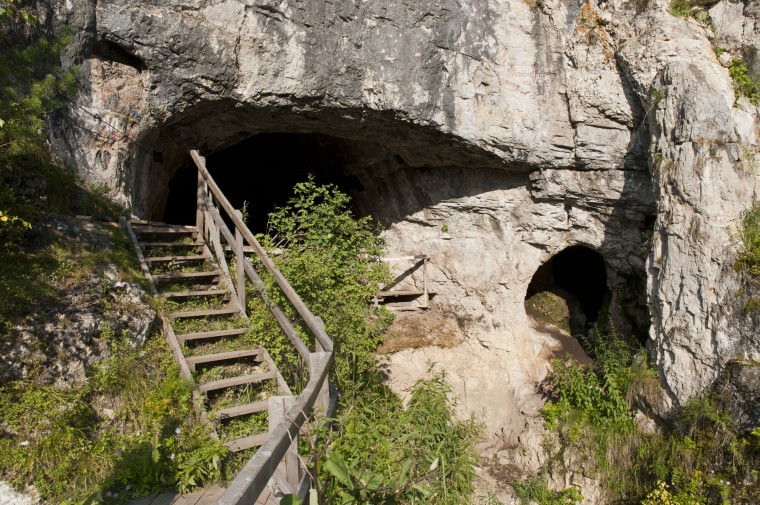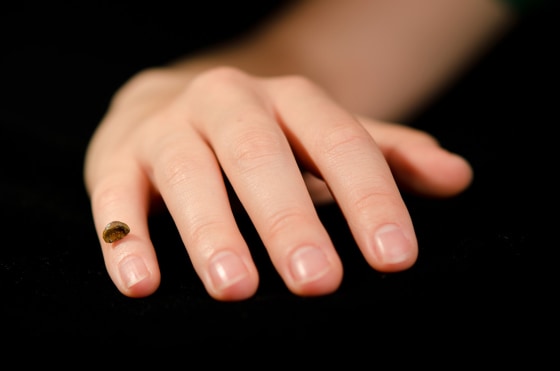Ancient Eurasia saw more than a little prehistoric hanky-panky, a new study shows. It finds the ancestors of modern humans interbred with Neanderthals and another type of prehuman not just once, but several times.
And the genes of these ancient Neanderthals and Denisovans live on today, in modern Europeans, Asians and in the Melanesians of Papua New Guinea and other Australasian islands.
The study, published in the journal Science, helps confirm earlier theories that human ancestors didn’t interbreed with other hominin species until after they left Africa. There’s a barely a trace of Neanderthal in Africans living today.

But once they started moving across Europe and Asia, they not only lived side by side, they had a few run-ins.
"Different populations of people have slightly different levels of Neanderthal ancestry, which likely means that humans repeatedly ran into Neanderthals as they spread across Europe," said Svante Paabo of the Max Planck Institute for Evolutionary Anthropology in Germany, who worked on the project and who was one of the first scientists to sequence the Neanderthal genome.
"Substantial amounts of Neanderthal and Denisovan DNA can now be robustly identified in the genomes of present-day Melanesians."
Paabo and colleagues sequenced DNA from 1,500 people from various ethnic groups around the world for the project.
They compared these sequences with those found in the remains of Neanderthals, who co-existed with modern humans in what is now Europe until about 30,000 years ago. They also used DNA taken from what are called the Denisovans — early humans identified through tiny scraps of bone and tooth found in a remote cave in Siberia in 2008.
They found patterns of inheritance that might help them track the movements of such early humans across the globe.
"Most people know back a few generations, maybe five generations," said David Merriwether of Binghamton University in New York, who worked on the study. "But where did we come from before that? That's what we want to find out."

This study gives some clues that show a lot of interaction between human subspecies back in prehistoric days.
"Substantial amounts of Neanderthal and Denisovan DNA can now be robustly identified in the genomes of present-day Melanesians, allowing new insights into human evolutionary history," they wrote.
"I think that people (and Neanderthals and Denisovans) liked to wander," said Benjamin Vernot, a University of Washington postdoctoral student in genomic sciences who helped lead the project. "And yes, studies like this can help us track where they wandered."
They found patterns that show there wasn’t just one random coupling that led to a single ancestor of many people alive today, but several.
"Consequently, all non-African populations derive around 2 percent of their ancestry from Neanderthals, whereas substantial levels of Denisovan ancestry (around 2-4 percent) are only found in Oceanic populations," they wrote.
"Denisovans are the only species of archaic humans about whom we know less from fossil evidence and more from where their genes show up in modern humans."
"We find significant evidence of Denisovan ancestry in our Melanesian samples, with admixture proportions varying between 1.9 percent and 3.4 percent."
This supports the theory that the ancestors of modern Melanesians came across what is now western Russia into Asia and then migrated across the vast oceans to where they live now.
"Denisovans are the only species of archaic humans about whom we know less from fossil evidence and more from where their genes show up in modern humans," said Joshua Akey of the University of Washington, who led the study.
But that’s not all.
“We find evidence for an additional pulse of Neanderthal admixture in Europeans, East Asians, and South Asians compared to Melanesians,” the researchers wrote.
“Collectively, these data suggest Neanderthal admixture occurred at least three distinct times in modern human history.”
What the DNA cannot tell us is how those matings occurred. It may have been rape, conquest or something more complex.
“It was apparently separate events, so not just one single happy party at some point,” evolutionary biologist Alan Cooper of the University of Adelaide in Australia, who was not part of the new study, told the journal Science.
Science also cannot say why modern humans outlived the Neanderthals, Denisovans and perhaps other early humans yet to be discovered. It's possible modern human ancestors killed them off, but equally possible that a small genetic advantage simply allowed modern humans to outbreed their cousins.
Genetically, the Denisovans seem similar to Neanderthals. Bones show that the Neanderthals were intelligent but stockier than modern humans. Other evidence shows that they used art and made jewelry, and DNA suggests that they may have given humans at least some immune system advantages, as well as red hair and a tendency to allergies.
Whatever DNA survived probably offers an advantage, or else it would have been weeded out by natural selection, the researchers say.
Big stretches of modern human DNA from people around the world are clear of any Denisovan or Neanderthal sequences, the researchers said. These are regions associated with language, as well as the tendency to autism.
